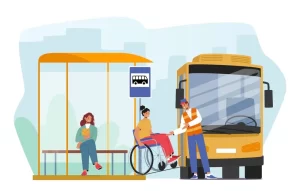If your NDIS application isn’t successful, it’s crucial to understand the steps to take. Applying for the National Disability Insurance Scheme (NDIS) involves a detailed process, requiring substantial information to ensure effective support. While the NDIS is vital in enhancing daily independence for many Australians, not everyone is approved on their first application. This could be due to a need for additional evidence or not meeting eligibility criteria.
For those preparing an NDIS application for the first time, there are key steps to simplify the process. However, you must know your options if your initial application is unsuccessful. This blog provides insights into streamlining the NDIS application and outlines what to do if your first attempt is not approved.
NDIS Application Process
Applying to the National Disability Insurance Scheme (NDIS) begins by contacting a local area coordinator or, if unavailable, contacting the NDIS directly. For children under 9, consulting an early childhood partner is advised. The process involves completing an NDIS Access Request Form and providing supporting evidence.
The National Disability Insurance Agency (NDIA) responds within 21 days, indicating approval, rejection, or requesting additional information. Applicants must verify identity, sign the application, and conduct a needs assessment.
This streamlined process ensures individuals receive tailored support, enhancing their quality of life. For detailed guidance, visit the official NDIS website.
Reasons For NDIS Application Rejection
If your NDIS application is unsuccessful, it might be for one or more of the following reasons
- The NDIS has specific criteria that applicants must meet. This includes age, residency, and the nature of the disability. Applications are often rejected if these criteria are not met.
- The NDIS requires that the disability be permanent or likely to be permanent. Additionally, it must significantly impact the individual’s ability to perform everyday activities. If the disability is deemed temporary or its impact on daily life is minimal, the application may be rejected.
- A common reason for rejection is the lack of sufficient evidence to support the claim. This includes medical reports, assessments by health professionals, and detailed accounts of how the disability affects daily life.
- Applicants must be Australian citizens, permanent residents, or hold a Protected Special Category Visa. Failure to meet these requirements can lead to rejection.
- The NDIS also considers the applicant’s financial situation. The application might be rejected if the individual’s assets or income exceed certain thresholds.
Responding to an NDIS Application Rejection
If your application is rejected, it’s important to understand that this is not the end of the road. There are several steps you can take:
- Carefully read the rejection notice. It will provide specific reasons for the rejection, which is crucial for understanding what needs to be addressed in a subsequent application or appeal.
- If the rejection is due to insufficient evidence, gather more comprehensive and detailed information about the disability and its impact.
- If circumstances change or you can provide new evidence, consider reapplying. Ensure that all information is accurate and complete.
- If you believe the decision was incorrect, you can request an internal review by the NDIS. This needs to be done within 28 days of receiving the rejection notice.
- For expert NDIS guidance, professionals or specialists are your go-to. Easy M Care offers customised support to ensure a thorough understanding and a successful journey through the application process.
- You can appeal to the Administrative Appeals Tribunal if the internal review fails. This is a more formal process and may require legal advice.
Related: 5 Stages Of Palliative Care
Moving Forward
Rejection can be disheartening, but it’s important to remember that it’s a common part of the process for many applicants. Persistence and a thorough understanding of the NDIS requirements are key. Here are some additional tips:
- Keep up to date with any changes in NDIS policies or criteria.
- Keep detailed records of all interactions, applications, and evidence submitted.
- Connect with other families or individuals undergoing the NDIS process. They can provide insights and moral support.
- While waiting for NDIS approval, explore other community or government supports available for individuals with disabilities.
How Easy M Care Services Help?
If your NDIS application has hit a roadblock, Easy M Care is here to transform rejection into triumph. Denied benefits don’t mean the end; they signify a new beginning.
Our seasoned NDIS advisors offer free, personalised assistance to understand the reasons for rejection and guide you towards success. We don’t just comprehend the NDIS process; we’re your partners in navigating its twists and turns.
Easy M Care focuses on your unique needs, providing transparent communication and expertise. Let us turn setbacks into stepping stones for a more enriched life. Reignite your NDIS journey with confidence. Because if your NDIS application faces challenges, we’re the bridge to a brighter, supported future.
Wrap UP!
Facing a rejection in your NDIS funding application can be tough, but it’s not the end of the road. With patience and determination, you can work through the appeals process and increase your chances of approval.
At Easy M Care, our friendly team is here to help, providing guidance and support from start to finish. If you have any questions or concerns, don’t hesitate to reach out to our experts. Good luck – we’re here for you!







